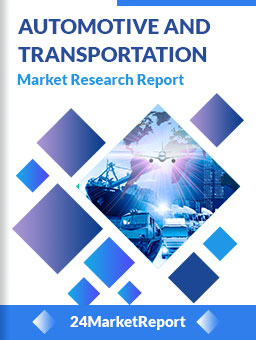
Download FREE Report Sample
Download Free sampleMARKET INSIGHTS
Global electric vehicle battery cooling system market size was valued at USD 864 million in 2024. The market is projected to grow from USD 1.09 billion in 2025 to USD 4.05 billion by 2032, exhibiting a CAGR of 25.3% during the forecast period.
Electric vehicle battery cooling systems are critical thermal management solutions designed to maintain optimal operating temperatures for lithium-ion batteries. These systems regulate temperatures between 20-30°C, where battery performance and safety are maximized. Below this range, charge acceptance drops significantly, while excessive heat accelerates degradation and raises safety risks. The technology encompasses cooling plates, heat exchangers, electronic pumps, and expansion valves working in concert to dissipate heat from densely packed battery modules.
The market growth is primarily driven by soaring EV adoption, with global sales reaching 10.5 million units in 2022 - a 55% increase from 2021. China dominates demand, accounting for 6.8 million new energy vehicle sales in 2022, while Europe follows with 1.58 million pure EV sales. Leading manufacturers like Mahle and Valeo are innovating liquid cooling solutions that outperform traditional air cooling, particularly for high-performance vehicles. However, cost pressures and complex integration requirements with battery management systems present ongoing challenges for market players.
Exponential Growth in EV Adoption to Fuel Demand for Battery Cooling Systems
The global electric vehicle market is experiencing unprecedented growth, with sales reaching 10.5 million units in 2022 - a 55% increase from the previous year. This surge directly impacts the battery cooling system market, as every EV requires an efficient thermal management solution. China leads this transition, accounting for 60% of global EV sales, while Europe follows with 25% market share. Battery cooling systems have become critical components as they maintain optimal operating temperatures between 20-30°C, ensuring battery longevity and safety. Without proper thermal management, EV batteries face reduced performance in cold climates and potential thermal runaway risks in extreme heat.
Advancements in Liquid Cooling Technology Accelerating Market Penetration
To know more about market statistics, Download a FREE Sample copy
Liquid cooling systems are gaining prominence over traditional air cooling methods, currently holding 68% of the market share. These systems offer superior thermal conductivity (25-50 times better than air) and more precise temperature control across battery packs. Recent innovations include compact cooling plates with enhanced heat transfer coefficients up to 8000 W/m²K and intelligent coolant flow control systems that reduce energy consumption by 15-20%. Major manufacturers are investing heavily in R&D to develop next-generation coolants with improved thermal properties and reduced viscosity for better pump efficiency.
➤ The average liquid cooling system can reduce battery temperature differentials to less than 5°C across modules, significantly improving battery pack longevity and charge acceptance rates.
Furthermore, government regulations mandating battery safety standards are prompting automakers to adopt advanced cooling solutions. Several countries now require EV batteries to maintain stable temperatures during fast charging cycles up to 350kW, creating additional demand for high-performance cooling systems.
High System Costs and Weight Penalties Impacting EV Economics
While essential for performance, battery cooling systems add significant cost and weight to electric vehicles. A typical liquid cooling system accounts for 12-15% of total battery pack cost and adds 25-40 kg to vehicle weight. This creates a challenging trade-off for manufacturers striving to reduce EV prices while maintaining safety margins. The complexity increases with battery energy density improvements - higher capacity batteries generate more heat, requiring more sophisticated cooling solutions that further drive up costs.
Other Challenges
Thermal Runaway Risks
Despite cooling systems, thermal runaway remains a critical concern with incidents occurring at rates of approximately 1 in 12 million vehicle miles. The industry continues to seek solutions that can rapidly dissipate heat during cell failures while maintaining system reliability over 8-10 year vehicle lifespans.
Integration Complexities
Modern cooling systems must interface with multiple vehicle systems including battery management, HVAC, and charging infrastructure. The added complexity increases development time by 20-30% and requires specialized engineering expertise that's in short supply.
Material Supply Chain Constraints Limiting Production Scalability
The battery cooling system market faces significant supply chain challenges for critical materials. Aluminum, which comprises 60-70% of cooling plate materials, has seen prices fluctuate by 40% in recent years. Specialty coolants containing glycol mixtures are experiencing production bottlenecks, with lead times extending to 6-8 weeks. These material constraints have caused cooling system production delays of 10-15% for some manufacturers, potentially impacting the broader EV production targets.
Additionally, the industry faces a shortage of skilled thermal engineers, with an estimated 25,000 additional professionals needed globally to meet projected demand. The specialized knowledge required for designing efficient cooling systems creates a bottleneck that could restrain market growth by 5-7% annually until addressed.
Emergence of Direct Cooling Technologies Creating New Growth Frontiers
The market is witnessing significant opportunities with the development of direct cooling technologies. Immersion cooling systems, where batteries are submerged in dielectric fluid, demonstrate 30-40% better heat dissipation than traditional methods. Several luxury EV manufacturers have begun pilot programs with these systems, which could reduce battery weight by 15% while improving thermal uniformity. The technology is projected to capture 12-18% market share by 2030 as costs decrease.
Another promising area is phase-change materials (PCMs) that absorb excess heat during operation. Early implementations show these materials can reduce peak temperatures by 10-15°C while eliminating moving parts. As battery energy densities continue increasing toward 400 Wh/kg, these innovative cooling solutions will become essential for maintaining safety and performance standards.
Liquid Cooling System Segment Dominates Due to Superior Thermal Management Efficiency
The market is segmented based on cooling technology into:
Air Cooling System
Subtypes: Passive air cooling, forced air cooling
Liquid Cooling System
Subtypes: Direct liquid cooling, indirect liquid cooling
Phase Change Material (PCM) Cooling
Thermoelectric Cooling
Refrigerant Cooling
Battery Electric Vehicles Segment Leads Due to Higher Thermal Management Requirements
The market is segmented based on vehicle application into:
Battery Electric Vehicle (BEV)
Plug-in Hybrid Electric Vehicle (PHEV)
Hybrid Electric Vehicle (HEV)
Fuel Cell Electric Vehicle (FCEV)
Cooling Plate Segment Gains Traction for Enhanced Heat Dissipation
The market is segmented based on components into:
Cooling Plate
Cooler
Electronic Water Pump
Electronic Expansion Valve
Heat Exchanger
Coolant
Manufacturers Accelerate Innovation to Meet Surging EV Battery Cooling Demand
The electric vehicle battery cooling system market features a mix of established automotive suppliers and specialized thermal management providers competing for share. As the EV market expands rapidly, these companies are pouring resources into developing more efficient and compact cooling solutions to address the critical challenge of battery thermal management. Mahle GmbH has emerged as a leader in liquid cooling systems, leveraging decades of automotive expertise and recent advances in thermal engineering to serve major automakers globally.
Hanon Systems and Valeo have gained significant traction with their integrated cooling solutions, particularly in the European and Asian markets where EV adoption rates are highest. These players benefit from strong relationships with automakers and the ability to scale production to meet the growing demand for battery thermal management systems.
Recent strategic moves have intensified competition. Several companies have expanded manufacturing capacity while others have formed technology partnerships with battery producers to co-develop optimized cooling solutions. The focus on energy efficiency and thermal stability has led to innovations like indirect liquid cooling and refrigerant-based systems that offer better temperature uniformity across battery packs.
Meanwhile, Gentherm and Dana Incorporated are making significant R&D investments to develop next-generation cooling technologies. These include phase-change materials and predictive thermal management systems that use AI to optimize cooling performance based on driving conditions and battery state.
Mahle GmbH (Germany)
Valeo SA (France)
Hanon Systems (South Korea)
Gentherm Incorporated (U.S.)
Dana Incorporated (U.S.)
Grayson Thermal Systems (U.K.)
BorgWarner Inc. (U.S.)
Robert Bosch GmbH (Germany)
Continental AG (Germany)
The electric vehicle battery cooling system market is witnessing a pronounced shift from air cooling to liquid cooling technologies. While air cooling systems dominated early EV models due to their simplicity and lower cost, liquid cooling now accounts for over 72% of new installations as battery capacities increase. This transition is driven by liquid cooling's superior efficiency in maintaining battery temperatures within the optimal performance window of 20-30°C, especially critical for high-density battery packs exceeding 75 kWh capacity. Recent innovations in direct refrigerant cooling and evaporative cooling techniques are further enhancing thermal management capabilities, with some systems achieving temperature uniformity within ±2°C across battery modules.
Integration With Vehicle Thermal Management
Automakers are increasingly adopting holistic thermal management architectures where battery cooling systems integrate with cabin temperature regulation and power electronics cooling. This trend is particularly notable in premium EV segments, where combined systems can improve overall energy efficiency by 15-20%. The approach leverages shared components like heat exchangers and coolant loops while implementing advanced control algorithms to prioritize cooling demands based on driving conditions. Such integration is becoming crucial as battery charging speeds accelerate, with 350kW DC fast charging now requiring precise thermal synchronization across vehicle subsystems.
The push for improved EV range is driving material innovations in cooling system components. Aluminum cooling plates now represent over 68% of the market, with advanced alloys and microchannel designs reducing weight by 30-40% compared to traditional designs. Recent developments in graphene-enhanced thermal interface materials show exceptional promise, with laboratory tests indicating 50% higher thermal conductivity than conventional solutions. Meanwhile, 3D-printed cooling manifolds are gaining traction, allowing optimized flow paths that reduce pumping energy requirements by 25% while simplifying assembly. These advancements are particularly critical as battery pack sizes increase, with cooling systems needing to maintain performance without adding prohibitive weight penalties.
Market trends show distinct regional preferences in cooling system technologies. In China, which accounted for 65% of global EV sales in 2023, liquid cooling adoption rates exceed 78% due to government regulations mandating strict thermal safety standards. European markets demonstrate strong traction for integrated thermal management systems, with 45% of new EVs incorporating combined cooling architectures. Meanwhile, emerging markets initially favor air-cooled systems for entry-level EVs, though this is expected to shift as fast-charging infrastructure expands. These regional variations present both challenges and opportunities for suppliers developing modular cooling solutions that can adapt to diverse market requirements.
North America
The North American market for electric vehicle battery cooling systems is driven by stringent emission regulations, strong EV adoption, and investments in automotive electrification. The U.S. Inflation Reduction Act (IRA) allocates $369 billion for clean energy, accelerating demand for efficient thermal management solutions. The region favors liquid cooling systems due to their superior thermal conductivity and precision in maintaining optimal battery temperatures. Key automakers like Tesla, Ford, and GM are prioritizing advanced cooling technologies to enhance battery lifecycle and safety. Canada follows closely, aligning with U.S. standards while emphasizing sustainability in its EV supply chain. Challenges include supply chain disruptions and high manufacturing costs, but innovation in lightweight cooling plates and integrated thermal solutions is mitigating these barriers.
Europe
Europe’s market thrives on ambitious decarbonization goals under the European Green Deal, with the EU aiming for 30 million EVs by 2030. Germany leads in cooling system advancements, supported by suppliers like Mahle and Valeo, who focus on modular liquid cooling designs for scalability. The region’s cold climate necessitates robust low-temperature performance, prompting R&D in dual-mode (air/liquid) systems. France and the Nordic countries are early adopters, driven by subsidies and urban emission zones—however, geopolitical tensions have strained raw material imports, complicating production. Despite this, Europe remains a hub for high-efficiency cooling technologies, with startups exploring phase-change materials (PCMs) for next-gen solutions.
Asia-Pacific
As the largest EV market globally, Asia-Pacific dominates battery cooling system demand, with China accounting for over 60% of installations. Local giants like BYD and CATL leverage cost-effective liquid cooling with compact designs tailored to high-volume production. Japan and South Korea emphasize reliability, with proprietary cooling plates and graphene-based solutions. India’s market is nascent but growing rapidly, driven by state subsidies and rising EV adoption. A key challenge is balancing affordability with performance—many budget EVs still use air cooling, though safety concerns are pushing a gradual shift to liquids. Southeast Asia shows potential, but infrastructure gaps and fragmented policies slow market maturation.
South America
The region’s EV market is emerging, with Brazil and Chile leading adoption. Cooling system demand is constrained by economic instability and reliance on imported components, yet local assembly initiatives are gaining traction. Brazil’s tax incentives for hybrids bolster limited PHEV-focused cooling solutions, while Argentina explores partnerships with Chinese firms for cost-competitive technologies. The tropical climate increases thermal management needs, but low consumer awareness and underdeveloped charging networks hinder widespread adoption. Despite challenges, regional governments are prioritizing EV infrastructure, signaling long-term growth potential for cooling system suppliers.
Middle East & Africa
The EV cooling system market here is in early stages, with the UAE and South Africa as focal points. Emirates’ Vision 2030 includes EV subsidies, spurring demand for premium liquid cooling systems in luxury models. Africa’s lack of local manufacturing forces reliance on imports, though Morocco is emerging as a production hub. Harsh desert climates necessitate durable cooling solutions, but high costs and electrification delays limit market penetration. Nevertheless, increasing investments in renewable energy and EV pilot projects are laying groundwork for future expansion, particularly in fleet and public transport applications.
This market research report offers a holistic overview of global and regional markets for the forecast period 2025–2032. It presents accurate and actionable insights based on a blend of primary and secondary research.
✅ Market Overview
Global and regional market size (historical & forecast)
Growth trends and value/volume projections
✅ Segmentation Analysis
By product type or category
By application or usage area
By end-user industry
By distribution channel (if applicable)
✅ Regional Insights
North America, Europe, Asia-Pacific, Latin America, Middle East & Africa
Country-level data for key markets
✅ Competitive Landscape
Company profiles and market share analysis
Key strategies: M&A, partnerships, expansions
Product portfolio and pricing strategies
✅ Technology & Innovation
Emerging technologies and R&D trends
Automation, digitalization, sustainability initiatives
Impact of AI, IoT, or other disruptors (where applicable)
✅ Market Dynamics
Key drivers supporting market growth
Restraints and potential risk factors
Supply chain trends and challenges
✅ Opportunities & Recommendations
High-growth segments
Investment hotspots
Strategic suggestions for stakeholders
✅ Stakeholder Insights
Target audience includes manufacturers, suppliers, distributors, investors, regulators, and policymakers
-> Key players include Mahle, Valeo, Hanon Systems, Gentherm, Dana, and Grayson, among others.
-> Key growth drivers include rising EV adoption (10.5 million BEVs/PHEVs sold in 2022, +55% YoY), thermal management requirements for battery safety, and government incentives for electrification.
-> Asia-Pacific leads with China accounting for 53% of global EV sales in 2022 (5.365M BEVs sold), followed by Europe with 1.58M unit sales.
-> Emerging trends include liquid cooling system dominance (higher efficiency), integration of smart thermal management systems, and lightweight material adoption.

Speak to our Custom Research Team and get the Custom Research in a budget
Custom ResearchFrequently Asked Questions ?
A license granted to one user. Rules or conditions might be applied for e.g. the use of electric files (PDFs) or printings, depending on product.
A license granted to multiple users.
A license granted to a single business site/establishment.
A license granted to all employees within organisation access to the product.
Upto Working 24 to 48 hrs
Upto 72 hrs max - Weekends and Public Holidays
Online Payments with PayPal and CCavenue
Wire Transfer/Bank Transfer
Hard Copy




 Industry Market Size
Industry Market Size SWOT Analysis
SWOT Analysis Industry Major Players
Industry Major Players Revenue Forecasts
Revenue Forecasts Historical and Forecast Growth
Historical and Forecast Growth Profitability Analysis
Profitability Analysis
























